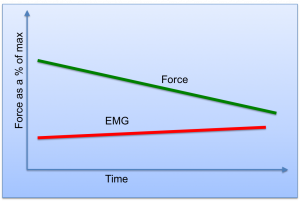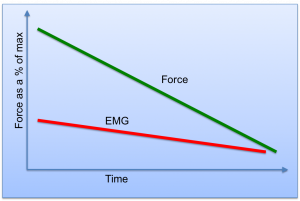Firstly let’s define some parameters. Someone training FOR a long run is someone training with the goal of competing. The end point is a long run. This includes people training for fun runs (including those training for the HBF Run For a Reason, or training for the City to Surf), training for half marathons, training for marathons, training for ultra marathons, training for ironman comps or training for triathlons. The aim here is to get better at running a long way. Someone training USING a long run is simply using this mode of exercise to try and elicit some benefit, whether it be cardiorespiratory fitness, fat loss or some other measure.
Interval training for long runs.
Effectively, interval training couples a drop in volume with an increase in intensity. “Interval training achieved its effects through improvements of maximum oxygen consumption, anaerobic threshold, and economy.” (Paton and Hopkins 2004).
An interval based cardiovascular session individually targets the three energy pathways; phosphocreatine, glycolytic and oxidative. Length of effort and work to rest ratio are used to target the individual pathways. A session may target one energy system, or a combination of the three. A description of the three energy systems is not required in this post, just know that they exist, and the improvement of each improves your capacity to perform in long runs.
- Intervals targeting the phosphogen system should have a 1:3 work to rest ratio and should be of a short duration (<30 seconds).
- Intervals targeting the glycolytic system should have a 1:2 work to rest ratio and should be of a moderate duration (30 seconds to four minutes).
- Intervals targeting the oxidative system should have a 1:1 work to rest ratio and should be of a relatively longer duration (two to four minutes).
Knowing this information alone is enough to construct a session. Remember, the pace should be the maximum you can maintain for the given time period.
There follow some examples of interval training sessions you should complete:
Phosphogen only:
- (10 secs sprint : 30 secs rest) x 8
- (20 secs sprint : 60 secs rest) x 4
- (30 secs sprint : 90 secs rest) x 6
Glycolytic only:
- (30 secs sprint : 60 secs rest) x 4
- (60 secs sprint : 120 secs rest) x 3
- (90 secs sprint : 180 secs rest) x 2
- (120 secs sprint : 240 secs rest) x 1
Oxidative only:
- (120 secs sprint : 120 secs rest) x 1
- (180 secs sprint : 180 secs rest) x 1
- (240 secs sprint : 240 secs rest) x 1
- (300 secs sprint : 300 secs rest) x 1
Mixed Pathway:
- (10 secs sprint : 30 secs rest) x 8
- (60 secs sprint : 120 secs rest) x 4
- (180 secs sprint : 180 secs rest) x 2
Resistance training for long runs.
A strength training program results quite simply in greater strength in the muscle. Greater strength means that a smaller proportion of maximal strength is needed during the running cycle – therefore delayed fatigue. Effectively, resistance training = greater fatigue resistance = you don’t get a tired = a good thing.Graphing the ability to produce force (the aim) at maximal and sub-maximal levels of exertion (below) illustrates the benefit.


The effect of resistance training on running economy (both as a result of the above sub-maximal requirements, and an improvement in technique) has been stated as high as 8%. Considerable over an extended run. For those of you familiar with POSE running, the research tells us that resistance training also results in less time spent on the ground (a good thing). Interestingly, those athletes who partook only in endurance running experienced no improvement in efficiency.
Now here’s an interesting point, and a shun to many of my contemporaries. According to ‘Impact of Resistance Training on Endurance Performance: A New Form of Cross-Training?‘ (1998), Exercise Scientists have found that:
- Endurance training decreases the activity of glycolytic enzymes, while resistance training has little effect.
- Endurance training increases intramuscular substrate stores, while resistance training has little effect.
- Endurance training increases oxidative enzyme activities, while resistance training has little effect.
- Endurance training increases mitochondrial density, while resistance training decreases it.
- Endurance training increases capillary density, while resistance training has little effect.
- Endurance training reduces muscle fibre size, while resistance training increases it.
So according to these isolated measures, resistance training should have either no effect, or a negative effect on endurance performance. However, and here’s the good bit, “…resistance training or the addition of resistance training to an ongoing endurance exercise regimen, including running or cycling, increases both short and long term endurance capacity in sedentary and trained individuals.” (Teneka and Swensen, 1998).
Surely this questions the validity of lab based research that focuses on singular measures rather than the all important and encompassing resulting performance. Results equal more than the sum of their parts.
The types of resistance exercise to be undertaken are closed chain (feet on the ground) exercises which encourage large muscle recruitment across multiple joints. Elements of powerlifting (squats, deadlifts and press) and Olympic Lifting (clean and jerk and snatch) fit these requirements perfectly. The ‘constantly varied, high intensity functional exercise’ as prescribed by CrossFit fit the requirements perfectly – though with a bias towards interval training.
The only reasons to do long runs are to develop the localised muscular endurance required in the event and to adapt the body to running with lowered levels of glycogen in the slow twitch muscle fibres. That being said, the frequency requirement of long runs is minimal. We would suggest once per fortnight is sufficient.
What if I don’t want to compete? Surely long runs are a better form of general exercise?
No. We have to consider EPOC, Excess Post Exercise Oxygen Consumption. This basically means that your body continues to use exercise for a period after exercise. Interval and resistance training have a higher level of EPOC than regular continuous training, so while the energy burnt during the exercise is less for interval training, it is made up for by the extra energy burnt after this more intense exercise form.
In fact, so powerful is this EPOC effect, that research has found that heightened levels of energy burn exist for 38 hours after a resistance session.
The benefits of interval and resistance training for fat loss are twofold. Firstly, an increase in muscle, a metabolically active tissue resulting in a bigger engine and more energy burn; and secondly an increase in EPOC, or energy burn for 38 hours straight after the exercise. Resistance exercise truly is an example of passive fat burning.




